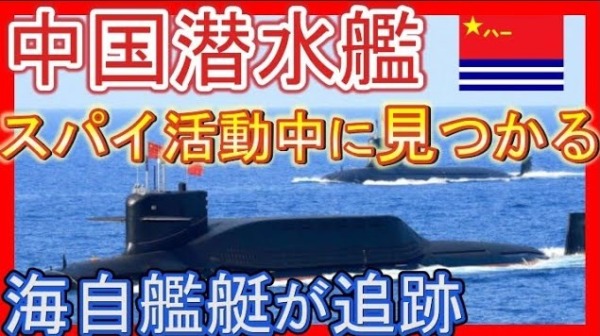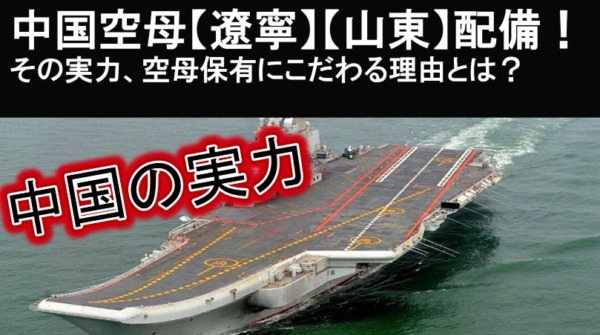
Amazonのオーディオブック12万タイトルの本を好きなだけお楽しみいただけます。・本の1冊分の月額で聴き放題
・料金をメリットが上回る
・いつでも読書できる
・読書量が格段に増え、積読が解消される
・長時間の読書も目が疲れない
・聴くたびに学びを感じる

This article is available in English.
Please scroll below the Japanese article to see the English version.
世界最強の艦隊と呼ばれるアメリカ海軍の空母打撃群。
10万トンを超える巨体には数十機の戦闘機が搭載されている。
しかし、この空母を狙った対艦弾道ミサイルを中国が開発した。
それが「空母キラー」という名をもつDF-21Dである。
今回は、軌道を描くだけの弾道ミサイルが、どういう仕組みで動く空母めがけて突っ込んでくるのか?
また、DF-21Dの迎撃は可能なのかについて解説していこう。
この記事に書かれている内容は
弾道ミサイルとはどういうミサイルか?
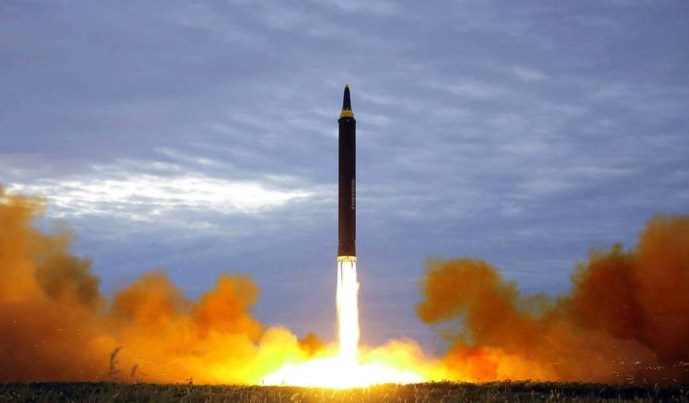
ミサイルは、ロケットエンジンやジェットエンジンを使って目標に向かって飛ぶ兵器であり、目標破壊のための弾頭、飛行制御のための誘導制御部、エンジンなどの推進部などから構成される。
弾道ミサイルとは、ロケットエンジンにより発射された後、弾道軌道、すなわち放物線軌道を描いて飛翔するものを指す。
つまり、野球のボールを投げるまでは、腕の力を必要とするが、それ以降は放物線を描いて重力により落下する原理と同じである。
北朝鮮は、核兵器の小型化・弾頭化を実現しているとみられるとともに、我が国を射程におさめる弾道ミサイルを数百発保有している。
昨今では、ミサイルの長射程化、多数のミサイルを同時に発射する能力、正確に目標を狙う能力、奇襲攻撃能力、低空を飛翔して探知を遅らせる新型ミサイルなど、ミサイル技術と攻撃能力の向上を図っている。
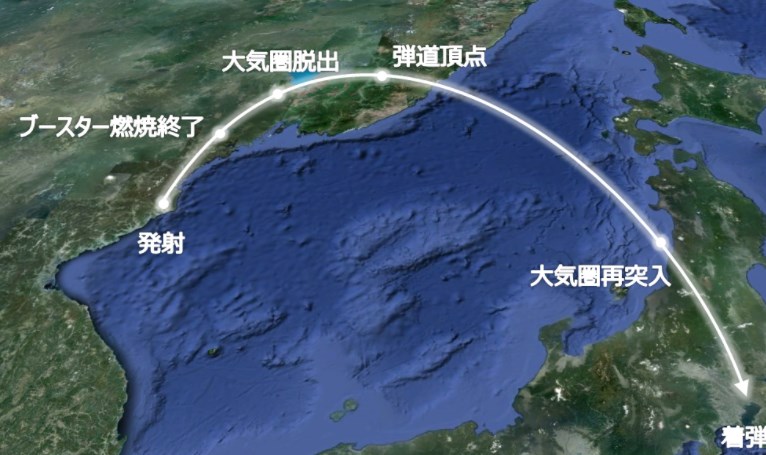
このうち弾道ミサイルは、主にロケットエンジンで推進し、発射後、上昇しながら速度を増しロケットが燃え尽きた後はそのまま慣性で飛翔するため、放物線を描いて目標地点に到達するため、イージス艦や航空自衛隊のレーダーが探知すれば弾着点がどこなのかが計算できる。
弾道ミサイルは、空気が非常に薄く、抵抗が少ない大気圏の高層や宇宙空間といった高々度を飛行するため、同じエネルギーでも、より遠距離に到達することが可能であり、また、大気中を飛行する航空機や巡航ミサイルよりも高速となる。
このため、一般的には、「長射程」、「高速」、「高々度」などの特徴を有するが、具体的には次のとおりである。
射程:短いもので数十km、長いものは1万km以上となり、東京・朝鮮半島間約900km、東京・ハワイ間約6,400kmである。
速度:射程1,000km級の弾道ミサイルの最高速度はマッハ約9で毎秒約3キロとなる、これは航空自衛隊の要撃戦闘機F-15の最高速度の約4倍近い速度である。
高度:数百kmから1,000km以上となり、射程1,000km級の弾道ミサイルの最高高度は約300km、ちなみに旅客機の飛行高度は約10kmである。

このように、遠距離から発射され、高々度を超高速で飛行する弾道ミサイルを探知することは非常に困難であり、また、極めて短時間で目標に到達することから、仮に探知できた場合でも、対処のために許される時間は極めて限定される。
中国は空母を攻撃するための「空母キラー」と呼ばれる対艦弾道を開発している。
対艦弾道ミサイルDF-21Dの脅威
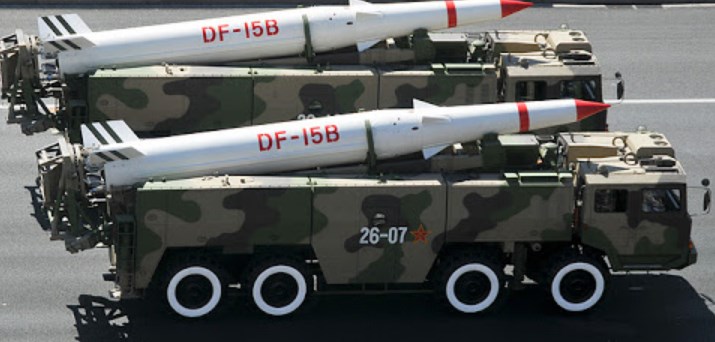
対艦弾道ミサイルDF-21Dは、準中距離弾道ミサイルDF-21を空母の攻撃用に改良したものである。
中国周辺で米軍の活動を制限するA2/AD(接近阻止・領域拒否)戦略のために重要な兵器でもある。
一般的な対艦ミサイルより高速なマッハ10であり、現時点で最終段階における迎撃手段としては艦船に搭載される防御システムでは、イージス艦搭載のSM-3弾道弾迎撃ミサイル以外にない。
地対艦ミサイルとして内陸から発射されるが、飛翔高度が高く、速度が超高速であるために迎撃や発射プラットフォームの破壊が難しい。
艦載機と多数の護衛艦艇に守られたアメリカ海軍の空母すら撃破できるという意味でDF-21Dは「空母キラー」とも呼ばれる。
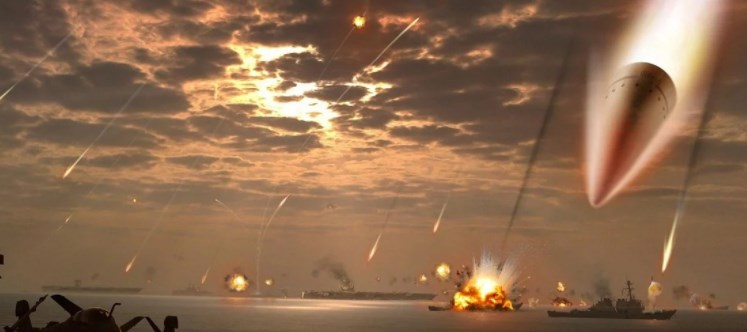
対艦弾道ミサイルの価値は、迎撃困難な投射手段で航空母艦を撃破できるところにあり、通常兵器である以上、直撃しなければ効果がない。
そのため、従来の弾道ミサイルとは異なり大気圏に再突入後、目標に対して極めて精密な誘導を必要とする。
通常の弾道ミサイルならば、陸上など動かない目標に発射するが、空母は常に動いているため、軌道を描いて落下するだけでは絶対に当たらない。
それを克服したのがDF-21Dなのだ。
DF-21Dは飛翔途中に空母の現在位置データを衛星経由で受け取る。
さらに弾着前には、弾道ミサイル自身の弾頭に組み込まれている、アクティブレーダーや赤外線センサーを組み合わせた終末誘導システムが作動して、空母を正確に捕捉し突っ込んでいくミサイルである。
習近平政権は偵察衛星打ち上げなどで米軍艦艇の監視体制も強化し、ミサイル戦力のさらなる増強につなげる構えである。
「関係筋によれば、無人で自動運行させていた古い商船を標的に、内陸部の青海省からDF-26B (射程約4000km)1発を先に発射。
数分後、東部の浙江省からもDF-21D(射程約1500km)1発を発射した。
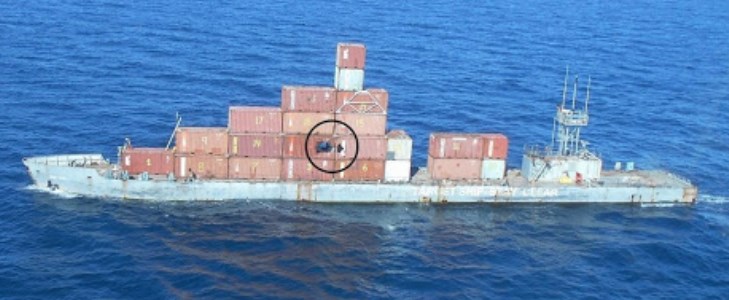
ミサイル2発はほぼ同時に船を直撃し沈没させたと報じられている。
自衛隊でも、艦艇と哨戒機から敵艦艇に向けての「同時弾着攻撃」という戦術がある。
中国は実際のミサイルを使用しての実験を人口900万人もいる海南省のすぐ近くの海域で行うとは、さすが全体主義国家である。
自衛隊では、このような訓練は考えられないことだが、着々と新兵器の開発を行う中国は、決して侮ることができない。
では、この対艦弾道ミサイルが空母に向けて発射された場合、迎撃することは可能なのだろうか?
対艦弾道ミサイルを迎撃できるのか?
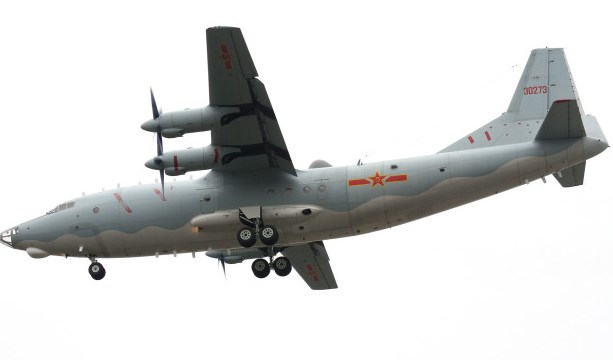
空母の位置情報は、軍事衛星や偵察機のY-8(ヤンキーエイト)、もしくはドローンを使用して補足されると予想されている。
偵察機Y-8の捜索能力は高く、高度約1万mを飛行した場合、640㎞×320㎞という広範囲を捜索できる能力がある。
東シナ海に数機が飛来すれば、怪しい船団を探知され、識別される恐れもある。
それらの情報をもとに、陸上からDF-21Dを発射し、空母に突っ込ませる作戦である。
しかもたった1発の攻撃のはずはなく、数発が同時に飛翔してくることが予想される。
1発被弾してしまうと、戦闘機の発着艦(はっちゃくかん)は、ほぼ不可能だろう。
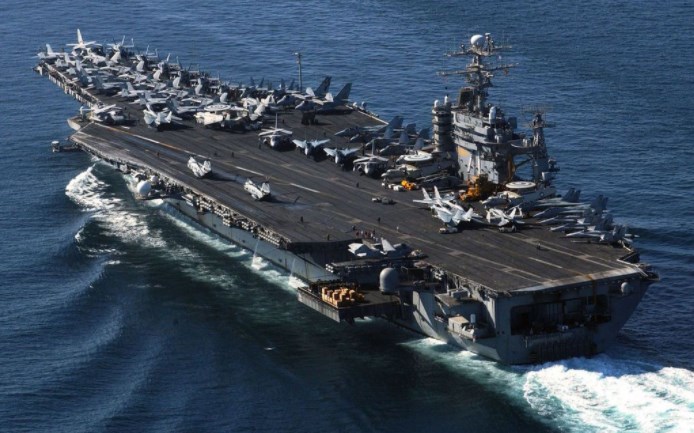
空母は、戦闘機というアセットを運用できなければ、ただの大きな標的である。
空母を守るためには、空母打撃群として共に行動するイージス艦が、DF-21Dを先に迎撃しなければならない。
現在、世界で弾道ミサイルを迎撃できる艦艇は、アメリカと日本のイージス艦だけである。
しかし、発射地点や弾着地点が明確に分かっていなければ、迎撃の計算ができないのが現状である。
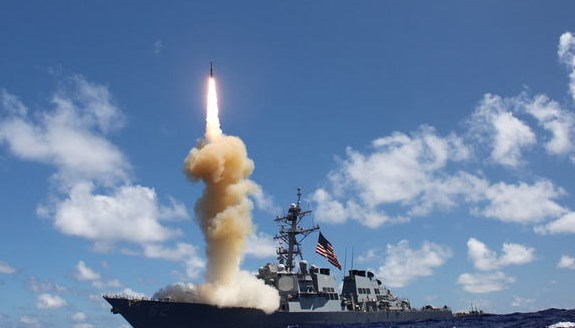
通常の対空ミサイルであれば、探知してから発射しても迎撃することは可能であるが、弾道ミサイルの速度は秒速6キロにも及ぶため、あらかじめ計算された場所に発射して、最終的に精密追尾に切り替えて迎撃しなければ直撃させることはできない。
そして、迎撃計算には高度コンピューターを使用しても多少の時間がかかるため、探知が遅れれば、補足したとして迎撃することは不可能である。
つまり、迎撃はほぼ不可能に等しいというのが現状である。
対艦弾道ミサイルDF-21D
通常、弾道ミサイルは高価かつ命中精度が低い欠点を補うため、基本的に核弾頭とセットで大量破壊兵器として運用される。
しかし、中国はその弾道ミサイルを空母を撃沈させるために改良し、実験にも成功している。
空母が第1列島線を超えるまでに、海上で阻止して、海軍を展開させる目的でもある。
弾道ミサイルは数千km~1万kmの飛翔でさえ、数十分で弾着できる速度のため、迎撃が非常に困難である。
また、グアムキラーと呼ばれるDF-26というミサイルは核弾頭と通常弾頭を搭載でき、射程はその名の通りグアムをおさめる。
中国は第1列島線だけでなでなく、第2列島線までも射程に収めている。
今後、空母キラーを迎撃できる防空システムを開発しなければ、脅威となることは間違いないだろう。
China’s New Anti-ship ballistic missile [DF-21D] Impossible to Intercept?! How is the Accuracy?
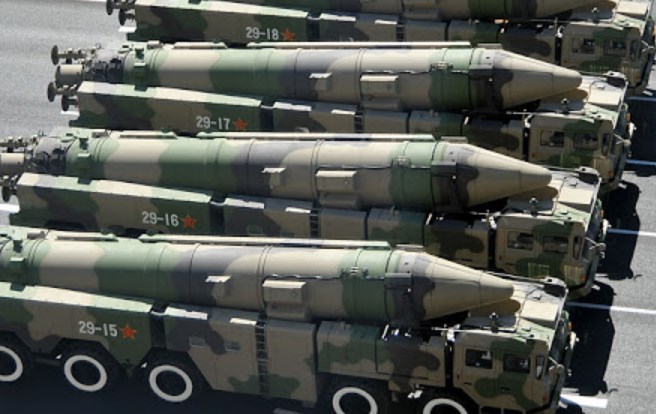
The U.S. Navy’s aircraft carrier strike group is known as the world’s most powerful fleet.
Its huge body, weighing over 100,000 tons, is equipped with dozens of fighter planes.
However, China has developed an anti-ship ballistic missile aimed at this aircraft carrier.
That missile is the DF-21D, also known as the “carrier killer”.
In this article, I would like to ask how a ballistic missile with a mere trajectory can ram into a moving aircraft carrier.
Also, is it possible to intercept the DF-21D?
What is a ballistic missile?
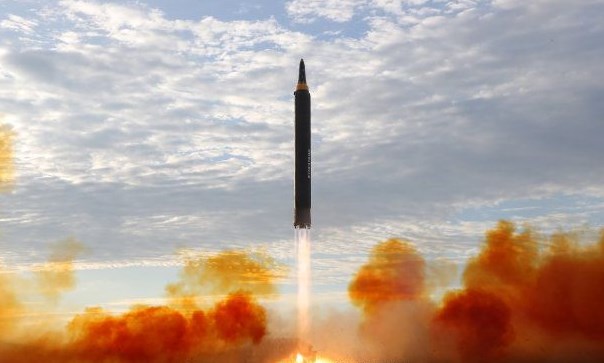
A missile is a weapon that flies toward a target using a rocket engine or a jet engine, and consists of a warhead to destroy the target, a guidance and control unit for flight control, and a propulsion unit such as an engine.
A ballistic missile is one that flies in a ballistic, or parabolic, trajectory after being launched by a rocket engine.
In other words, the principle is the same as that of a baseball, which requires the strength of the arm until it is thrown, but after that it falls in a parabolic trajectory due to gravity.
North Korea is believed to have realized the miniaturization and warheadization of its nuclear weapons and possesses hundreds of ballistic missiles that are within range of Japan.
In recent years, North Korea has been improving its missile technology and offensive capabilities, including longer-range missiles, the ability to launch many missiles at the same time, the ability to accurately target targets, surprise attack capabilities, and new missiles that fly at low altitudes to delay detection.
Of these, ballistic missiles are propelled mainly by rocket engines, and after launch, they rise in speed and fly by inertia after the rockets have burned out, drawing a parabola to reach the target point.
Because ballistic missiles fly at high altitudes, such as high in the atmosphere or in outer space, where the air is very thin and there is little resistance, they can reach farther distances with the same energy, and they are also faster than aircraft or cruise missiles that fly in the atmosphere.
For this reason, they generally have characteristics such as “long range,” “high speed,” and “high altitude,” and the specifics are as follows.
Range: The shortest range is a few tens of kilometers, and the longest is more than 10,000 kilometers, with a range of about 900 kilometers between Tokyo and the Korean Peninsula and about 6,400 kilometers between Tokyo and Hawaii.
Speed: The maximum speed of a ballistic missile with a range of 1,000 km is about 3 km per second at Mach 9, which is nearly four times the maximum speed of the Air Self-Defense Force’s F-15 fighter jet.
The maximum altitude of a ballistic missile with a range of 1,000 km is about 300 km, and the altitude of a passenger plane is about 10 km.
Thus, it is extremely difficult to detect ballistic missiles that are launched from a long distance and fly at high altitudes and very high speeds, and since they reach their targets in a very short time, even if they could be detected, the time allowed for action would be extremely limited.
China is developing an anti-ship ballistic called the “carrier killer” to attack aircraft carriers.
The threat of the DF-21D anti-ship ballistic missile
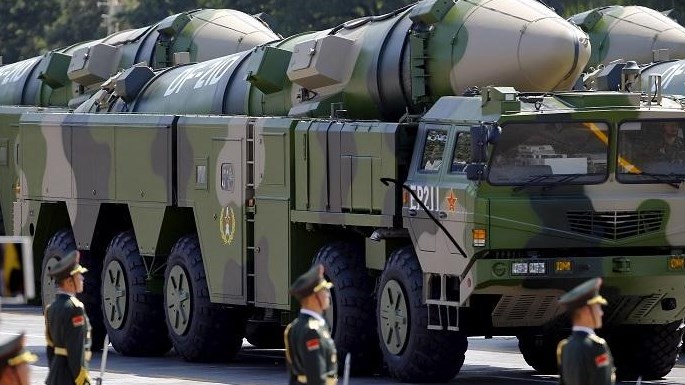
The Threat of the DF-21D Anti-Ship Ballistic Missile
The DF-21D anti-ship ballistic missile is a modified version of the DF-21 semi-medium-range ballistic missile designed to attack aircraft carriers.
It is also an important weapon for the A2/AD (Approaching Area Deterrence/Denial) strategy to limit US military activities around China.
It has a speed of Mach 10, which is higher than that of ordinary anti-ship missiles, and at this point, there is no other final-stage interceptor except for the SM-3 ballistic missile interceptor mounted on Aegis ships, which is a defense system mounted on ships.
The SM-3 is launched from inland as a surface-to-ship missile, but its high flight altitude and ultra-high speed make it difficult to intercept and destroy the launch platform.
The DF-21D is also called a “carrier killer” in the sense that it can destroy even U.S. Navy aircraft carriers protected by onboard aircraft and a large number of escort vessels.
The value of anti-ship ballistic missiles lies in the fact that they can destroy aircraft carriers with a projectile that is difficult to intercept, and as conventional weapons, they are ineffective without a direct hit.
Therefore, unlike conventional ballistic missiles, they require extremely precise guidance to their targets after re-entering the atmosphere.
A conventional ballistic missile would be launched at a target that does not move, such as land, but since an aircraft carrier is always moving, it would never be able to hit the target simply by following a trajectory and falling.
The DF-21D overcame this problem.
The DF-21D receives data on the carrier’s current position via satellite during flight.
Before impact, the missile’s warhead activates a terminal guidance system that combines active radar and infrared sensors to accurately capture the carrier and ram it.
The Xi Jinping administration is also preparing to strengthen its surveillance of U.S. naval vessels through the launch of reconnaissance satellites and other measures to further enhance its missile capabilities.
According to the sources, one DF-26B missile (with a range of about 4,000 km) was fired first from the inland province of Qinghai, targeting an old merchant ship that had been operating automatically and unmanned.
A few minutes later, one DF-21D (range: 1,500 km) was fired from the eastern province of Zhejiang.
It is reported that the two missiles hit the ship almost simultaneously and sank it.
The Self-Defense Forces also have a tactic called “simultaneous missile strikes” from naval vessels and patrol aircraft against enemy ships.
China is indeed a totalitarian state that would conduct a test using actual missiles in the waters very close to Hainan Province, which has a population of 9 million.
This kind of training is unthinkable for the Self-Defense Forces, but China’s steady development of new weapons cannot be underestimated.
So, if this anti-ship ballistic missile is launched at an aircraft carrier, will it be possible to intercept it?
Is it possible to intercept an anti-ship ballistic missile?
Can we intercept an anti-ship ballistic missile?
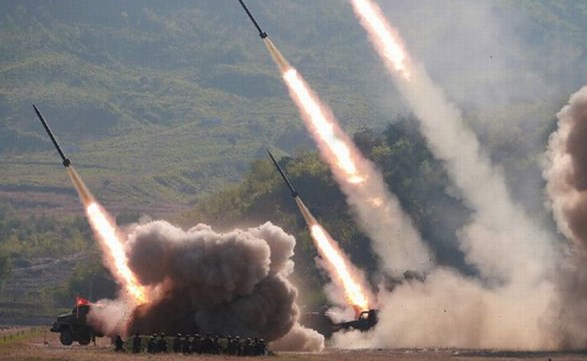
It is expected that the carrier’s location information will be supplemented by military satellites, Y-8 (Yankee-8) reconnaissance aircraft, or drones.
The Y-8 reconnaissance aircraft has a high search capability, and when flying at an altitude of about 10,000 meters, it has the ability to search a wide area of 640 km by 320 km.
If several of these aircraft fly into the East China Sea, a suspicious fleet could be detected and identified.
Based on this information, the plan was to launch the DF-21D from land and ram it into the aircraft carrier.
Moreover, it would not be a one-shot attack, but several shots would fly at the same time.
If one of the DF-21Ds was hit, it would be almost impossible for the fighter to land and take off.
An aircraft carrier is just a big target if it cannot operate its fighter assets.
In order to protect the carrier, the Aegis ships acting together as a carrier strike group must intercept the DF-21D first.
Currently, the only naval vessels in the world capable of intercepting ballistic missiles are the Aegis ships of the United States and Japan.
However, without a clear knowledge of the launch and landing sites, it is impossible to calculate the intercept.
If it is an ordinary anti-aircraft missile, it can be intercepted even if it is launched after detection, but since ballistic missiles travel at speeds of up to six kilometers per second, they cannot be directly hit unless they are launched at a pre-calculated location and finally intercepted by switching to precision tracking.
And since the intercept calculation takes some time even with the use of advanced computers, if the detection is delayed, it is impossible to intercept even if it is supplemented.
In other words, interception is almost impossible at present.
DF-21D anti-ship ballistic missile
Normally, ballistic missiles are used as weapons of mass destruction in combination with nuclear warheads in order to compensate for their high cost and low accuracy.
However, China has modified its ballistic missiles to sink aircraft carriers, and has even successfully tested them.
The purpose is to intercept the aircraft carrier at sea and deploy its navy before it crosses the first island chain.
Ballistic missiles are extremely difficult to intercept because of their speed, which can take tens of minutes to hit even a flight of several thousand to ten thousand kilometers.
In addition, the DF-26 missile, known as the Guam killer, can carry both nuclear and conventional warheads and, as its name suggests, has a range that covers Guam.
China has not only the first island chain but also the second island chain within its range.
If we don’t develop an air defense system that can intercept the carrier killer in the future, it will definitely become a threat.
Amazonのオーディオブック12万タイトルの本を好きなだけお楽しみいただけます。・本の1冊分の月額で聴き放題
・料金をメリットが上回る
・いつでも読書できる
・読書量が格段に増え、積読が解消される
・長時間の読書も目が疲れない
・聴くたびに学びを感じる


